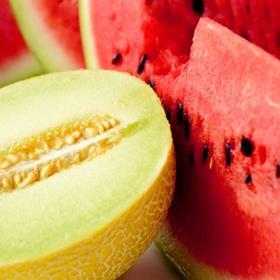
Myanmar is renowned for the inherent eating quality of some of its fruits – particularly its seedless watermelons and the Sein Ta Lone (diamond) mango.
Watermelon is by far the country’s largest fruit export followed by mango and musk melon, with almost 350,00 tonnes of watermelon and musk melon shipped to markets in China, India and Asean nations since April, reports the Myanmar Times.
China is the main export market with the supply of watermelons to Yunnan through the border town of Muse in Shan State. From October to March, 80-90 per cent of the watermelons imported into Yunnan are from Myanmar. Other export markets are Thailand, Singapore, Malaysia, Hong Kong and Korea.
In 2013/14, over 612,000 tonnes of fruit were exported by Myanmar to China worth US$75m with watermelon representing 65 per cent of this value. In the first eight months of 2014/15, exports grew further to 710,000 tonnes worth US$108m.
While agriculture is a key driver of Myanmar’s economy, representing 36 per cent of the country’s GDP, 70 per cent of employment and 30 per cent of exports, there are often appearance, food safety, packaging and postharvest handling issues that prevent these fruits from accessing premium export markets.
The government’s economic development activities focus on improving productivity and marketing in the agriculture sector in order to stimulate economic growth, reduce poverty and improve food security.
In relation to mango, there is a three-year project involving 1,000 farmers to develop mango exports to Singapore which is seen as a premium paying market. The mangoes in the Myanmar’s Mandalay area have superior eating quality, but traditional management means the fruit is of poor appearance due to pest and disease damage.
In the past, the fruit has been mainly sold loose in old beer cartons to China and only achieved a low price. With the introduction of integrated pest management for fruit fly and the covering of fruit with brown paper bags, fruit quality can be dramatically improved along with food safety through reduced pesticide use.
Singapore fruit importers have introduced two layer tray packs along with each fruit individually wrapped in foam-net. With improved fruit quality and packaging, gross prices are now three times higher and net returns are now double what they were previously for growers participating in this project.
The full Myanmar country report features in the June edition of Asiafruit Magazine



